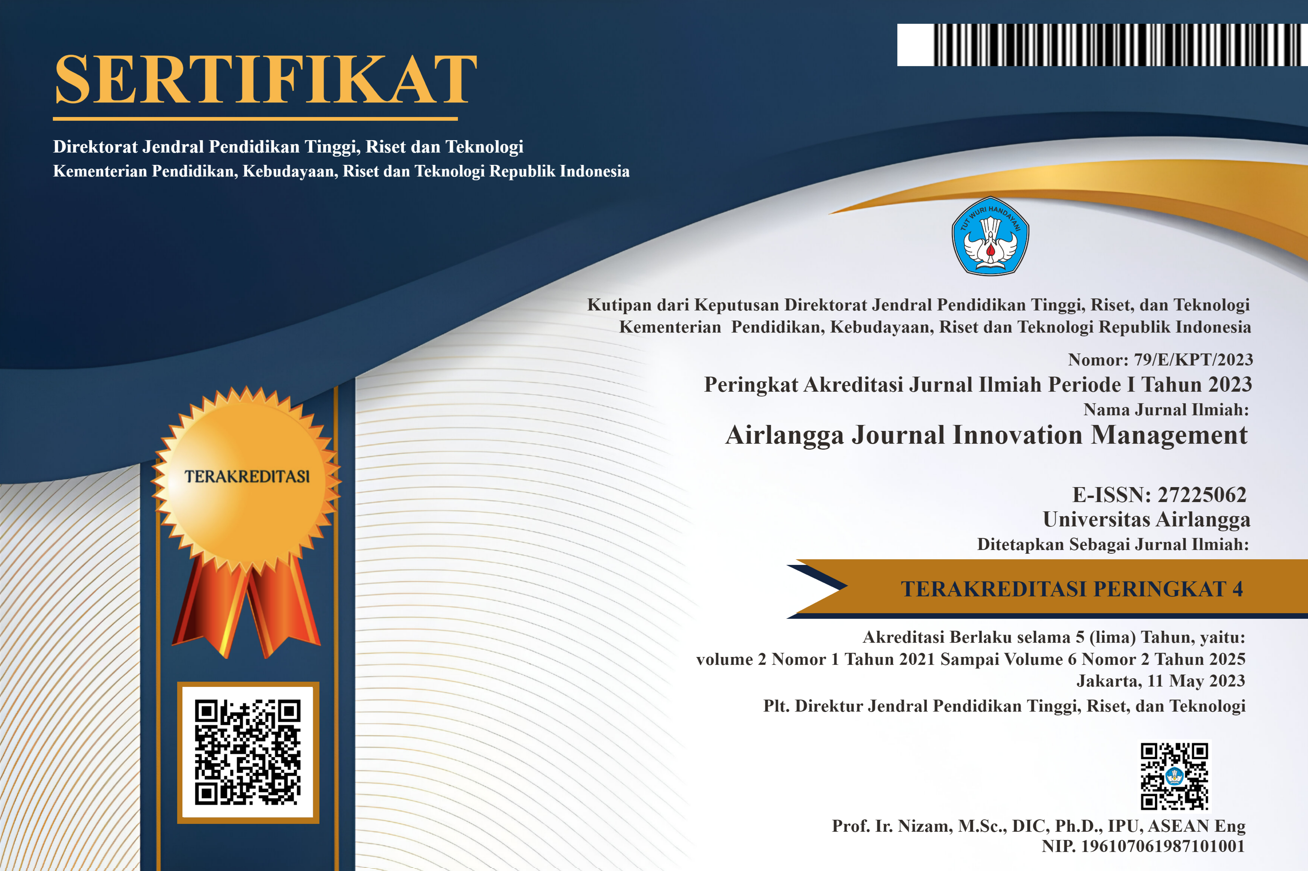The Influence of Trust and Transaction Security on Interest in Using The QRIS Payment System
Study: QRIS Users in Bandung City
This study aims to determine the effect of trust and transaction security on interest in using the QRIS payment system (study on QRIS users in Bandung City). The development of technology and payment systems today has encouraged innovations, including the use of QRIS as an increasingly popular digital payment method. In this case, understanding the interaction between trust, security, and interest in use is very important. This study uses quantitative methods with a population of QRIS users in Bandung City. The sample was taken by purposive sampling by distributing questionnaires to 200 respondents. Data collection was done through a questionnaire with a five-point Likert scale. Data analysis includes validity, reliability, descriptive statistics, classical assumptions, multiple linear regression, hypothesis testing, and coefficient of determination testing. The results showed that the research instruments were valid and reliable. There is a strong correlation between trust variables and security variables on interest in using, with a contribution of 41.8%. This observation shows that trust and security have a positive and significant influence on interest in using the QRIS payment system in Bandung City. The managerial implications of the results of this study suggest that digital payment service providers, such as banks and financial technology companies, should prioritize improving the security and systems that users trust. This can be done by increasing information transparency, educating about digital transaction security, and strengthening consumer data protection systems. These steps will increase user interest and loyalty to QRIS payment systems and encourage wider adoption of QRIS in society.
Amin, H., Rahim, A., Ang, M. C. H., & Jr, S. L. S. (2011). Determinants of customers’ intention to use Islamic personal financing: The case of Malaysian Islamic banks. Journal of Islamic Accounting and Business Research, 2(1), 22–42. https://doi.org/10.1108/17590811111129490
Amri, A., Malik, R. F., & Fachrandi, M. K. (2025). Determinants Influencing QRIS Adoption as a Digital Payment Tool in Ciledug, Tangerang City. Airlangga Journal of Innovation Management, 6(1), 154–170. https://doi.org/10.20473/ajim.v6i1.70331
Ayu, S., & Yuliana, R. (2022). Pengaruh Kepercayaan, Kemudahan, dan Persepsi Risiko Terhadap Minat Menggunakan QRIS di Kalangan Milenial. Jurnal Teknologi Dan Bisnis, 5(1), 45–56.
Azaria, M. J. F., Tubastuvi, N., Purwidianti, W., & Aryoko, Y. P. (2024). Gen Z Investment Decision: Role of Financial Literacy, Financial Behaviour, Financial Experience and Risk Tolerance. Airlangga Journal of Innovation Management, 5(4), 721–739. https://doi.org/10.20473/ajim.v5i4.61315
Badotra, S., & Sundas, A. (2021). A Systematic Review On Security Of E-commerce Systems. International Journal of Applied Science and Engineering, 18(2), 1–19. https://doi.org/10.6703/IJASE.202106_18(2).010
Davis, F. D. (1989). Perceived Usefulness, Perceived Ease Of Use, And User Acceptance Of Information Technology. MIS Quarterly, 13(3), 319–340. https://doi.org/10.2307/249008
Fadlillah, S. A., Nugroho, J. A., & Sangka, K. B. (2021). Pengaruh Kemudahan dan Keamanan Terhadap Minat Menggunakan Quick Response Code Indonesian Standard (QRIS) Pada Pelaku UMKM Binaan Bank Indonesia KPW Solo. Jurnal Pendidikan Bisnis Dan Ekonomi, 7(1). https://jurnal.uns.ac.id/bise
Fajar, A., Salama, H., Nurfahira, M. T., & suwarni, I. (2024). Analisis Faktor - Faktor Yang Mempengaruhi Mahasiswa Dalam Menggunakan Quick Response Code Indonesian Standar (QRIS). Jurnal Emanasi, 7(1), 01–18.
Ghozali, I. (2018). Aplikasi Analisis Multivariate Dengan Program IBM SPSS 25 (9th ed.). Badan Penerbit Universitas Diponegoro.
Jayadi, F. (2024, December). Transaksi QRIS Tumbuh Pesat 186 Persen pada November 2024. https://www.emitennews.com/news/transaksi-qris-tumbuh-pesat-186-persen-pada-november-2024
Khafifah, N., & Diana, D. (2024). The Influence of Factors on Sharia Financial Management Behavior: SEM Approach. Airlangga Journal of Innovation Management, 5(1), 170–184. https://doi.org/10.20473/ajim.v5i1.55354
Linck; Pousttchi, Key; Wiedemann, & Georg, D. (2006). Security Issues in Mobile Payment from the Customer Viewpoint (Issue 2923).
Mayer, R. C., Davis, J. H., & Schoorman, F. D. (1995). An Integrative Model of Organizational Trust. Academy Of Management Review, 20(3), 709–734.
McKnight, D. H., Choudhury, V., & Kacmar, C. (2002). Developing and Validating Trust Measures for E-commerce: An Integrative Typology. Information Systems Research, 13(3), 334–359. https://doi.org/10.1287/isre.13.3.334.81
Naufaldi, I., & Tjokrosaputro, M. (2020). Pengaruh Perceived Ease of Use, Percieved Usefulness dan Trust Terhadap Intention To Use. Jurnal Manajerial Dan Kewirausahaan, 2(3), 715–722.
Oktaviar, C., Arief, H., & Saratian, E. T. P. (2024). Pengaruh Kualitas Pelayanan, Kepercayaan, dan Kenyamanan Terhadap Keputusan Menggunakan QRIS Sebagai Alat Pembayaran Digital. Management Studies and Entrepreneurship Journal, 5(2), 6792–6796.
Paramita, R. W. D., Rizal, N., & Sulistyan, R. B. (2021). Metode Penelitian Kuantitatif (3rd ed.). Widya Gama Press.
Portal Jabar Kota Bandung. (2024). Bandung Peringkat Satu Transaksi Digital Se-Jabar. Portal Jabarprovgoid. https://jabarprov.go.id/berita/bandung-peringkat-satu-transaksi-digital-se-jabar-6553
Pradana, A., & Rahadi, R. A. (2021). Factors Influencing the Behavioral Intention to Use Quick Response Code Indonesian Standard (QRIS) among MSMEs in Indonesia. Internasional Journal of Financial Technology, 3(2), 98–110.
Priadana, S., & Sunarsi, D. (2021). Metode Penelitian Kuantitatif (1st ed.). Pascal Books.
Rachman, A., Julianti, N., & Arkoyah, S. (2024). Challenges and Opportunities for QRIS Implementation as a Digital Payment System in Indonesia. EkBis: Jurnal Ekonomi Dan Bisnis, 8(1), 1–13. https://doi.org/10.14421/ekbis.2024.8.1.2134
Riyanto, S., & Hatmawan, A. A. (2020). Metode Riset Penelitian Kuantitatif Penelitian di Bidang Manajemen, Teknik, Pendidikan dan Eksperimen (1st ed.). Deepublish.
Sarwono, A. E., & Handayani, A. (2021). Metode Kuantitatif (1st ed.). Unisri Press.
Satrio, Y. D., Dewana, T. I., & Muji, A. (2024). Manfaat Teknologi Digital Payment QRIS Bagi UMKM. Merdeka Indonesia Journal International (MIJI), 4(1).
Sebayang, N. I. T. B., & Rahmawati. (2023). Pengaruh Petsepsi Kepercayaan dan Persepsi Keamanan Terhadap Minat Pengguna QRIS Sebagai Alat Pembayaran Digital UMKM Halal Kota Medan. Jurnal Tabarru’ : Islamic Banking and Finance, 6(2), 491–502.
Sherchan, W., Nepal, S., & Paris, C. (2013). A Survey of Trust in Social Networks. ACM Computing Surveys, 45(4), 1–33. https://doi.org/10.1145/2501654.2501661
Siregar, N. M., Wisna, N., & Asniar. (2024). Analisis Hubungan Antara Keamanan Dan Pemahaman Pengguna QRIS Dengan Efektivitas Transaksi Digital Mahasiswa Kota Bandung Melalui Regresi Linier Berganda. Jurnal Ilmiah Edunomika, 08(02), 01–09.
Sugiyono, P. D. (2013). Metode Penelitian Kuantitatif, Kualitatif Dan R&D (19th ed.). CV. Alfabeta.
Sugiyono, P. D. (2020). Metode Penelitian Kuantitatif, Kualitatif, Dan R&G (2nd ed.). CV. Alfabeta.
To, A. T., & Trinh, T. H. M. (2021). Understanding Behavioral Intention To Use Mobile Wallets In Vietnam: Extending The Tam Model With Trust And Enjoyment. Cogent Business and Management, 8(1). https://doi.org/10.1080/23311975.2021.1891661
Venkatesh, V., Thong, J. Y. L., & Xu, X. (2012). Consumer Acceptance and Use of Information Technology: Extending the Unified Theory of Acceptance and Use of Technology. MIS Quarterly, 36(1), 157–178. https://doi.org/10.2307/41410412
Wijaya, A., & Indriani, H. (2021). Pengaruh Trust dan Perceived Risk Terhadap Penggunaan Sistem Pembayaran Digital (Studi pada pengguna QRIS). Jurnal Sistem Informasi Dan Keuangan, 9(3), 210–223.
Yaribakht, A. H., Abdullah, M. S., & Ghobadi, A. R. (2019). A Novel Color Image Watermarking Method Based On Digital Wavelet Transform And Hungarian Algorithms. International Journal of Advanced Trends in Computer Science and Engineering, 8(2), 154–164. https://doi.org/10.30534/ijatcse/2019/09822019
Copyright (c) 2025 Airlangga Journal of Innovation Management

This work is licensed under a Creative Commons Attribution-NonCommercial-ShareAlike 4.0 International License.
- The journal allows authors to hold copyright without restrictions and retain publication rights without restrictions. The author retains the copyright and grants the first publication rights to the journal, with his work simultaneously licensed under the Creative Commons Attribution-NonCommercial-ShareAlike 4.0 International License (CC BY-NC-SA). This license allows others to share the work with acknowledgment of authorship and initial publication in this journal, provided that the work is not used for commercial purposes and that any derivative works must use the same license.
- Authors may enter into additional contractual agreements for non-exclusive distribution of the journal publication version (e.g., uploading it to an institutional repository or publishing it in book form), while still including acknowledgment of the initial publication in this journal.
- Authors are allowed and encouraged to upload their work online (e.g., in an institutional repository or personal website) before and during the submission process. This can support productive scientific exchanges as well as increase citations to published works.

AJIM by UNAIR is licensed under a Creative Commons Attribution-NonCommercial-ShareAlike 4.0 International License.





















